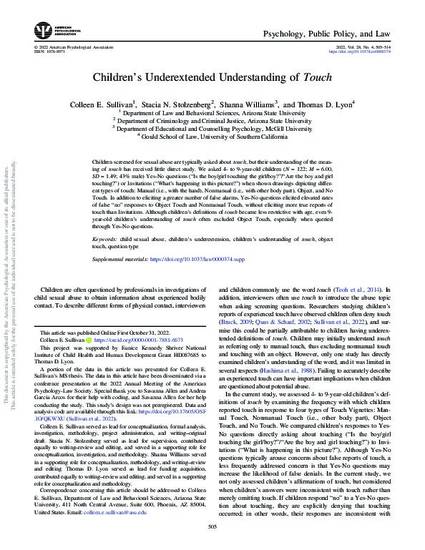
Article
99. Children’s underextended understanding of touch.
Psychology, Public Policy, & Law
(2022)
Abstract
Children screened for sexual abuse are typically asked about touch, but their understanding of the meaning of touch has received little direct study. We asked 4- to 9-year-old children (N = 122; M = 6.00, SD = 1.49; 43% male) Yes-No questions (“Is the boy/girl touching the girl/boy?”/“Are the boy and girl touching?”) or Invitations (“What’s happening in this picture?”) when shown drawings depicting different types of touch: Manual (i.e., with the hand), Non-manual (i.e., with other body part), Object, and No Touch. In addition to eliciting a greater number of false alarms, Yes-No questions elicited elevated rates of false “no” responses to Object Touch and Non-manual Touch, without eliciting more true reports of touch than Invitations. Although children’s definitions of touch became less restrictive with age, even 9-year-old children’s understanding of touch often excluded Object Touch, especially when queried through Yes-No questions.
Keywords
- child abuse,
- child sexual abuse,
- forensic interviewing,
- child witnesses
Disciplines
Publication Date
Summer September 26, 2022
Citation Information
Sullivan, C.E., Stolzenberg, S.N., Williams, S., & Lyon, T.D. (2022). Children’s underextended understanding of touch. Psychology, Public Policy, & Law, 28(4), 505-514.
